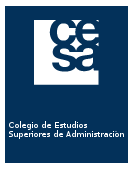Mostrar el registro sencillo del ítem
The importance of leadership and innovation in the success of a company in the 21st century.
| dc.contributor.author | Jaramillo Moreno, Juanita | spa |
| dc.date.accessioned | 2022-10-24T21:32:08Z | |
| dc.date.available | 2022-10-24T21:32:08Z | |
| dc.date.created | 2011-12 | |
| dc.identifier.uri | http://hdl.handle.net/10726/4745 | |
| dc.description.abstract | A medida que avanzamos hacia el futuro, comenzamos a experimentar muchos cambios en la forma en que se hacen las cosas en términos de negocios. Estos cambios presentan grandes oportunidades, oportunidades que no son para todos. Solo van a ser para las empresas que sean capaces de adaptarse y cambiar para enfrentar el desafío y utilizar sus recursos de la mejor manera posible para aprovechar las oportunidades del mercado y construir una ventaja competitiva sostenible. La forma tradicional de hacer negocios ya no es factible y las empresas no van a sobrevivir bajo estrategias como la eficiencia, las economías de alcance y una mejor productividad. La idea es crear una cultura basada en el liderazgo y la innovación, y alentar a los empleados, clientes, recursos y todo dentro de la empresa hacia estos fines. Necesitamos líderes en las organizaciones capaces de motivar a las personas y hacer que todos avancen con confianza en la misma dirección brindando visión, orientación, apoyo y creando un entorno en el que las personas se sientan libres para trabajar fuera del alcance, experimentar, compartir ideas, en un entorno basado en la flexibilidad y la motivación. Este nuevo estilo de gestión del siglo XXI motivará a los empleados a crear, a desarrollar cosas nuevas bajo diferentes parámetros y reglas donde se permiten errores. De ellos se aprende lo más importante para desarrollar grandes ideas y productos. | spa |
| dc.description.tableofcontents | Research Question and Objectives. The replacement of the traditional business model with the new business model. New management model in the 21st century. From traditional management to multi-cultural leaders. Leadership as the new managerial task. The importance of innovation in the new managerial mode. Outlines of the 21st century model. Leadership. Are Leaders Born or Made?. The Leadership Mindset. Team Building. The six essential leadership attributes. Leaders self-motivation in hard times. Leadership tools. Leadership = Communication. DISC profile. Innovation. Definition of innovation. Management innovations. Open and closed innovation. Inhibitors and enablers of innovation. Innovation in startups and big corporations. Requirements for successful innovation. Innovation metrics. Manager’s guide to increase innovation. Becoming a great innovation team leader. Culture of innovation and creativity. Successful companies today who have leadership and innovation as their top priorities. Google. The Google culture. Offices at Google. Nine lessons learned about creativity in Google. Procter and Gamble. Innovation culture. The consumer is the boss. Integrating innovation. The talent component. Apple. Steve Jobs, Leader in Innovation. Innovation strategy in Apple. Pixar. Innovation lessons from Pixar. | eng |
| dc.format.extent | 82 páginas | spa |
| dc.format.mimetype | application/pdf | spa |
| dc.language.iso | eng | eng |
| dc.subject.ddc | 658.4092 Liderazgo | spa |
| dc.title | The importance of leadership and innovation in the success of a company in the 21st century. | eng |
| dc.rights.accessrights | info:eu-repo/semantics/restrictedAccess | eng |
| dc.identifier.local | ADM / J37 2011 | |
| dc.rights.local | Acceso restringido | spa |
| dc.type.version | info:eu-repo/semantics/acceptedVersion | eng |
| dc.description.degreename | Administrador de Empresas | spa |
| dc.identifier.instname | instname:Colegio de Estudios Superiores de Administración - CESA | spa |
| dc.identifier.reponame | reponame:Biblioteca Digital - CESA | spa |
| dc.identifier.repourl | repourl:https://repository.cesa.edu.co/ | |
| dc.description.abstractenglish | As we move into the future, we are beginning to experiment with many changes in the way things are being done in terms of business. These changes are presenting big opportunities, opportunities that are not for everybody. They are only going to be for the companies that are able to adapt and change in order to face the challenge, and to use their resources in the best way possible to take advantage of the opportunities in the market, and to build a sustainable competitive advantage. The traditional way of doing business is no longer feasible, and companies are not going to survive under the strategies such as efficiency, economies of scope, and better productivity. The idea is to create a culture based on leadership and innovation, and to encourage employees, customers, resources, and everything inside the company towards these ends. We need leaders in organizations capable of motivating people and making them all step forward confidently in the same direction by providing vision, guidance, support, and by creating an environment where people feel free to work out of scope, to experiment, to share ideas, in an environment based on flexibility and motivation. This new style of management of the 21st century will motivate employees to create, to develop new things under different parameters and rules where mistakes are allowed. The most important things are learned from them to develop great ideas and products. | eng |
| dc.description.degreelevel | Pregrado | spa |
| dc.publisher.program | Administración de Empresas | spa |
| dc.publisher.grantor | Colegio de Estudios Superiores de Administración - CESA | spa |
| dc.type.local | Tesis/Trabajo de grado - Monografía - Pregrado | spa |
| dc.type.coar | http://purl.org/coar/resource_type/c_7a1f | |
| dc.subject.armarc | Administración de empresas | spa |
| dc.subject.armarc | Políticos -- Liderazgo político | spa |
| dc.subject.armarc | Aptitud de mando | spa |
| dc.subject.armarc | Ambiente de trabajo | spa |
| dc.subject.armarc | Motivación del empleado | spa |
| dc.subject.armarc | Clima organizacional | spa |
| dc.type.driver | info:eu-repo/semantics/bachelorThesis | eng |
| dc.type.redcol | http://purl.org/coar/resource_type/c_46ec |

